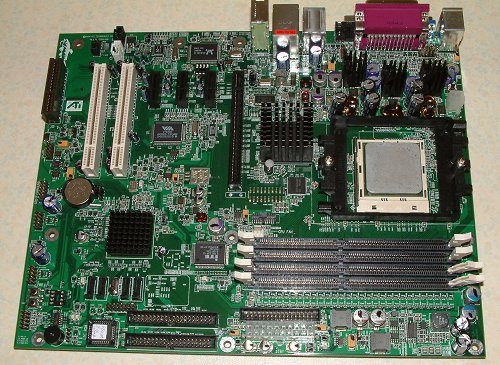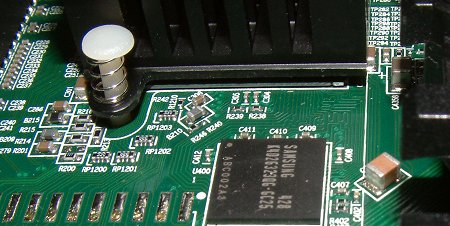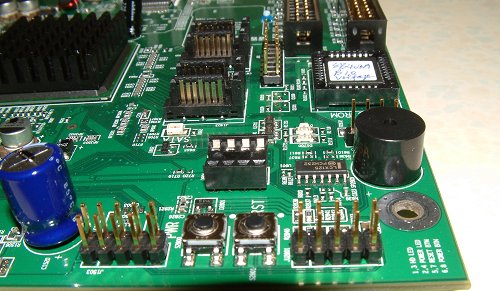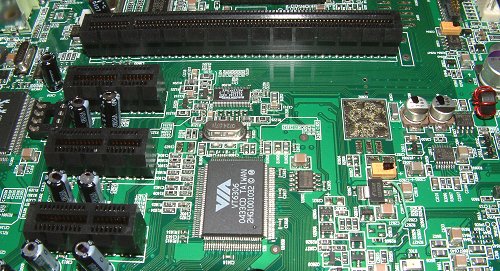Bullhead
I'll take a brief look at ATI's reference RS480 motherboard, codenamed Bullhead.
Reference boards arrive in 2 guises. On the one hand, there's the unwieldy and impractical sort. These are just to showcase a chipsets talents, and often don't fit into regular cases. However, the recent trend has been to manufacture reference boards that wouldn't look out of place in the retail channel. Intel has adopted this approach for a while, and now ATI has done the same with the Bullhead. Stick an MSI badge on it and who would know the difference?.
You'll also be seeing 4 DIMM slots on partner models, at least as far as S939 is concerned. I like the general layout of the Bullhead; everything is where it should be. There's plenty of room around the socket for mounting even the largest of air coolers.

A closer look at the north bridge reveals the embedded memory I alluded to earlier. There will either be 1 or 2 16MB DRAM(s), providing a 32- or 64-bit memory interface. Remember, having and exclusively using a local framebuffer doesn't impact upon system RAM's performance. It's handy when specifying a basic XPRESS 200 setup with, say, only 256MB memory.

A closer look at the left-hand edge shows handy power and reset buttons. 4 SATA ports can be seen in the distance. RAID0+1 functionality is missing, though. Also, unlike Intel, ATI's keen to use 2 ATA channels.

A single X16 lane and a trio of X1 lanes that are run off the north bridge. I'd expect this arrangement to be used by most partners. Note that ATI has had to use VIA's single-chip FireWire ASIC. There's no FireWire or Gigabit Ethernet integrated into the south bridge.

VGA and DVI both emanate from the RS480's IGP. Audio quality will be solid if not spectacular. The BIOS was also surprisingly good. There was ample CPU and voltage adjustment, a whole slew of RAM timings, and a decent range of IGP-powered video combinations, including UMA + local framebuffer, the preferred performance combination.









